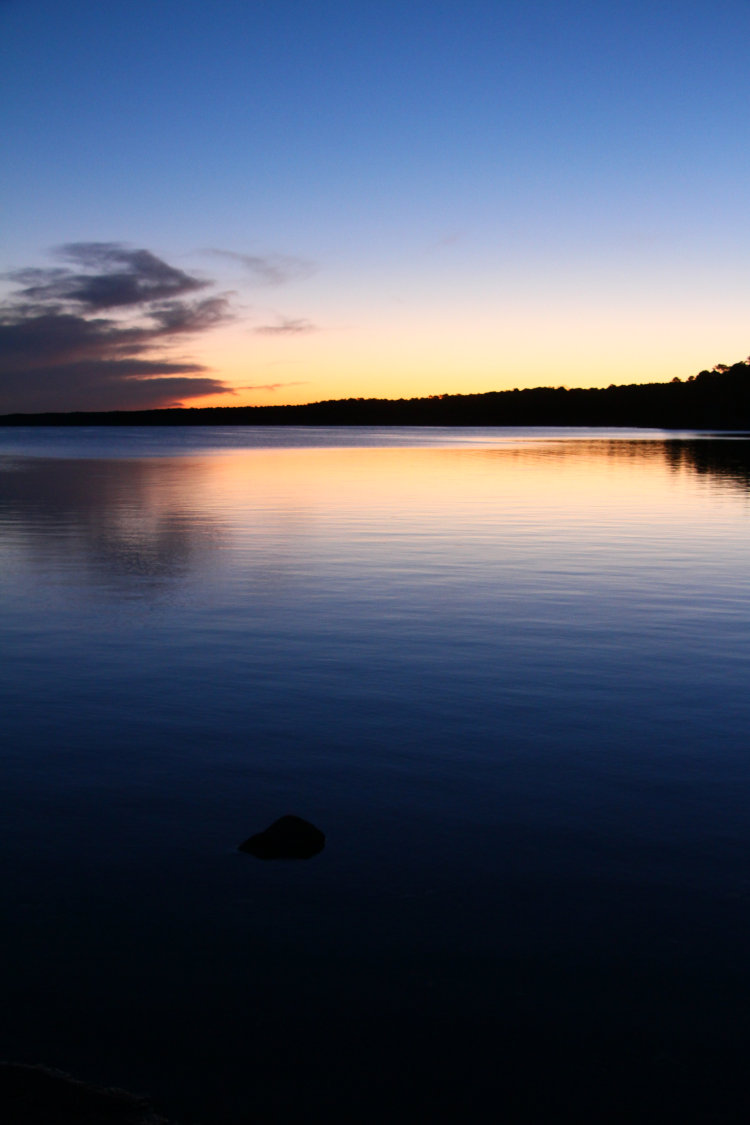
The Insuperable Mr Bugg (who has abandoned his blog and now relies on [urk!] social media, so you can only see his photos if he’s your ‘friend’ or whatever, while I welcome everyone) and I went down to Jordan Lake for sunrise yesterday, and it performed as typical for this area, which is to say, not very well. Colors peaked a little higher than this, in that the clouds got a pinkish tinge for a few minutes, but that was it. And this revealed one of the negative aspects of the “golden hour,” those times right around sunrise and sunset where photography is greatly improved by the color change in the light. Because yes, there was still a bit of a golden hue to the sunlight for a while – but only if you had the sun at your back. Facing anywhere towards the sun meant dealing with blinding glare and primarily silhouettes. Of everything.
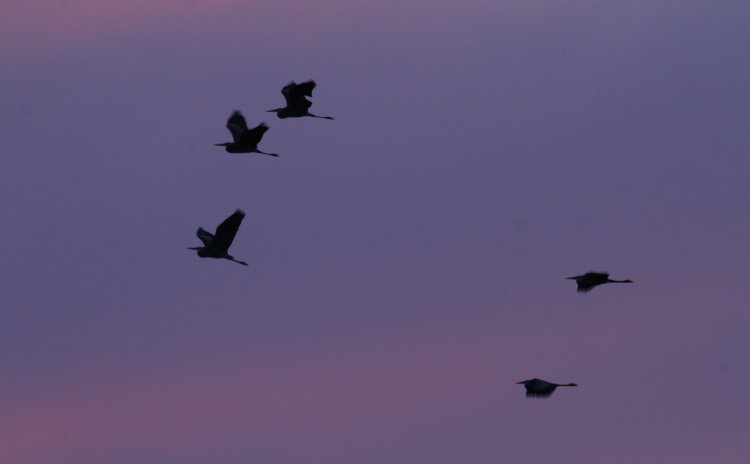
This is not an area where the great blue herons (Ardea herodias herodias) tend to flock, so seeing a flock cruising past was notable, if not the most photogenic. Sure, if the sun were actually up then it might have been better, more light on them and faster shutter speeds to make things much sharper, but they chose the time, not me.
The distant (now) osprey nest was visible only in silhouette for the entire time we worked that portion of the lake, but at least we could make out some activity therein.

This is cropped significantly, but an osprey (Pandion haliaetus) was easy to make out on an adjoining branch, not to mention that I’d seen it arrive. What I wasn’t terribly sure about was if the nest itself was occupied, or if that was simply evidence of the supporting branches – there seems to be something in there, but it also seems a bit wide in comparison to the other. Not that this is bad of course, just, you know, in comparison.
But a subsequent image answered that question.
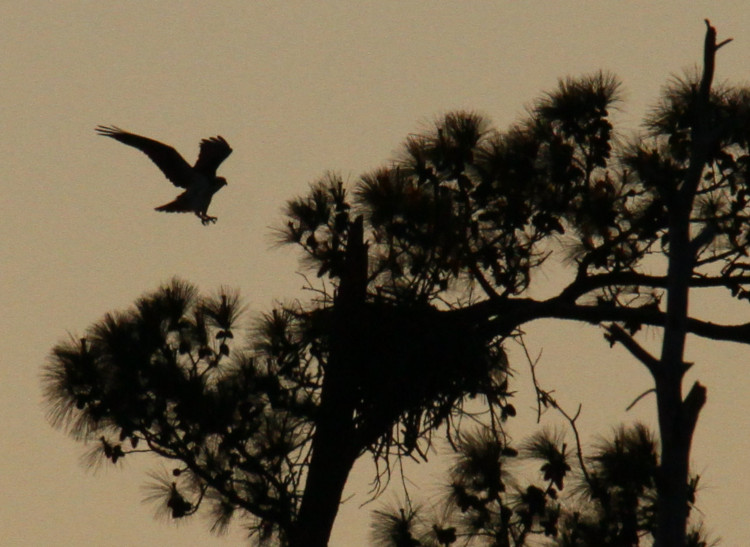
It was definitely not a branch making that hump in the nest, and I even checked the angles of these two images carefully to make sure that I hadn’t moved significantly along the lakeshore between them and changed details through parallax. Neither of the osprey were choosing to do any fishing early in the morning, but another image that I have might explain why, since one of the them is arriving with a long stick, so they’re still working on the nest and likely haven’t mated yet. Eggs will still be a little while, much less the frenetic fishing activity that comes when the young are born. We’ll keep an eye on it – but in the afternoon, when the sun has switched sides and is shining on the nest rather than behind it.
Still, the light provided a little to work with, for the few subjects that showed up in the right direction.
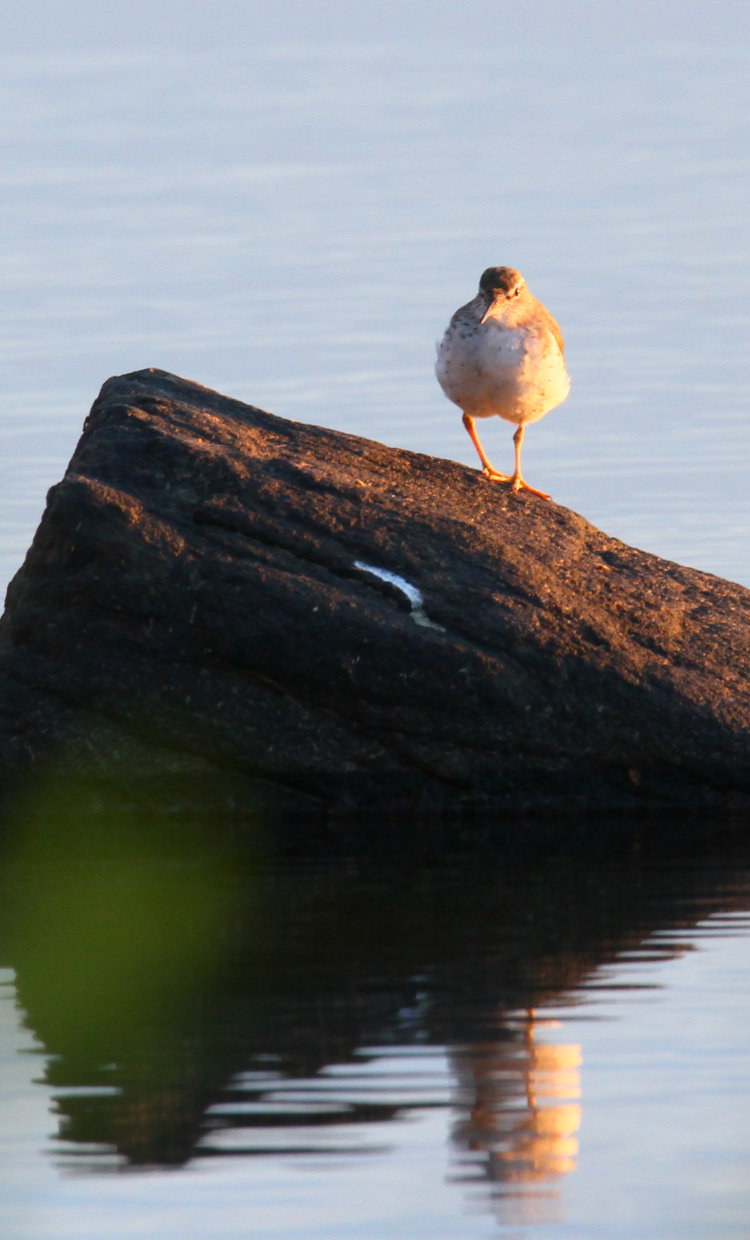
Normally this distance and detail wouldn’t be enough for me to confirm identity, but this spotted sandpiper (Actitis macularius) displayed the bobbing motion that is typical of the species when meandering around his Piece of the Rock (stay with me here.) Plus I’d seen one nearby earlier, maybe a hundred meters from this spot. I chose this particular angle because it was the only one that showed the catchlight in the eye.
A turkey vulture (Cathartes aura) passed nearby and caught the sun, differentiated from the black vultures that were flocking and doodling around the entire area.
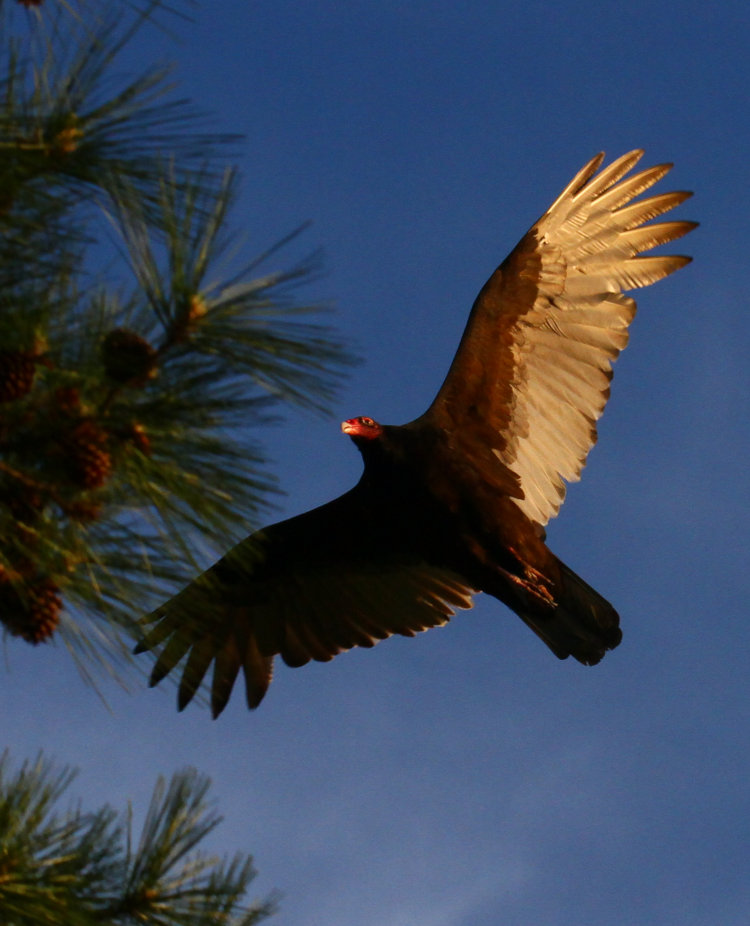
The sunlight and the angle really brought out the silvery undersides of the primary flight feathers on the wings, turned more bronze by the early sun, plus we’re now close enough to see the red head of the species, which is actually difficult to make out even at a moderate distance. Both vulture species soar with their wings held at a slight dihedral, a shallow V-shape, which helps distinguish them even at a great distance from ospreys and eagles, which hold their wings flat in a glide. And of course the coloration under the wings (silvery here, white ‘palm’ patches for the black vultures,) is the next characteristic.
Mr Bugg wants credit for spotting the following one, so if you’re one of his ‘friends,’ you can do so.
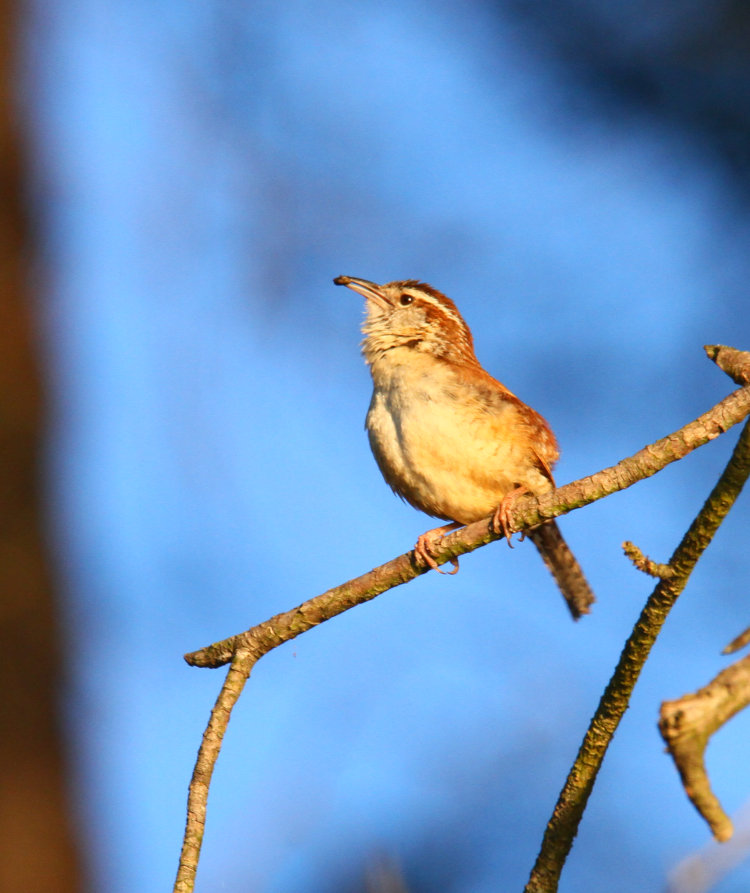
I have a sequence of frames that I know were taken when this Carolina wren (Thryothorus ludovicianus) was singing, and in only one is the beak even slightly open, while you can see the standing throat feathers here that usually signify vocalization. In other words, it was talking with its mouth full, perhaps trying to entice a female with this magnificent capture, which is probably about as effective as wearing the hood up on your ‘hoodie’ in class. C’mon, that’s smaller than a ladybug! Put some effort into it!
Now, we’d seen a couple of bald eagles (Haliaeetus leucocephalus) while there, but only quite a ways off and silhouetted by the sky, barely distinguishable as eagles. Then we switched to another nearby location, putting the sun more behind us as we looked out over the lake, and there the eagles were playing hide-and-seek for a bit. Our first encounter netted too few images of worth, as the eagles were close, but obscured by the trees rather than out over the lake in open sky. Eventually, however, a pair began wheeling together, first several hundred meters off, but finally drawing close enough for something worth keeping.
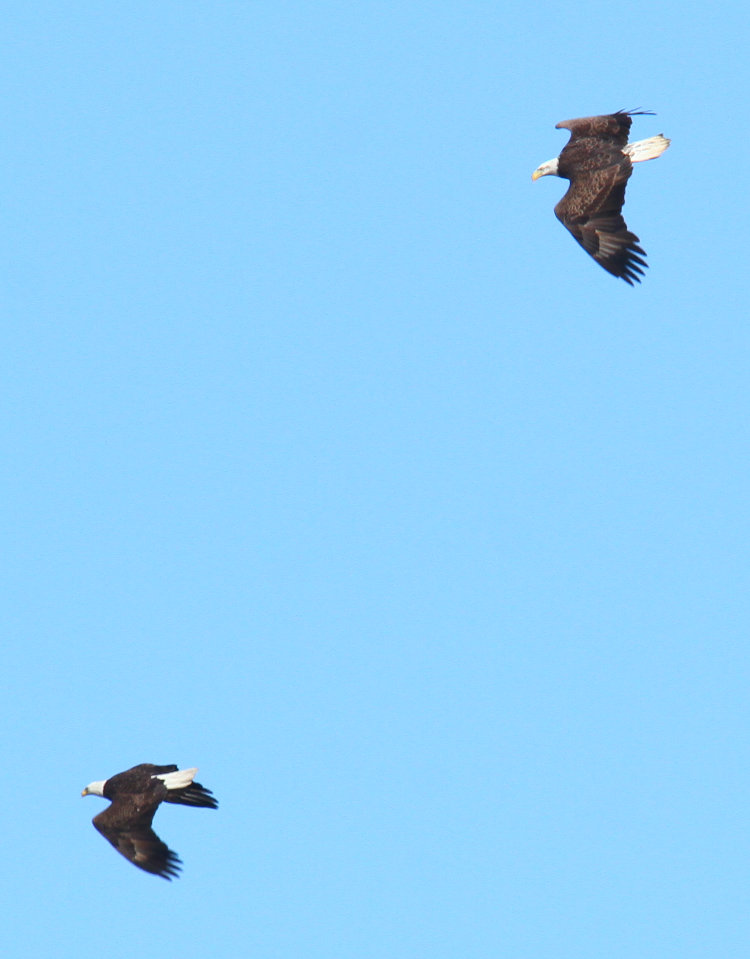
We watched what I can only assume is the same pair wheeling together in wide circles for quite some time; there were no aggressive or even playful moves, and in fact no attempts at any contact were visible, but no fishing behavior either. I suspected courtship, but cannot confirm this in any way.
Watching without aid, they were difficult to tell apart at first, but the photos helped illustrate how to distinguish the two.
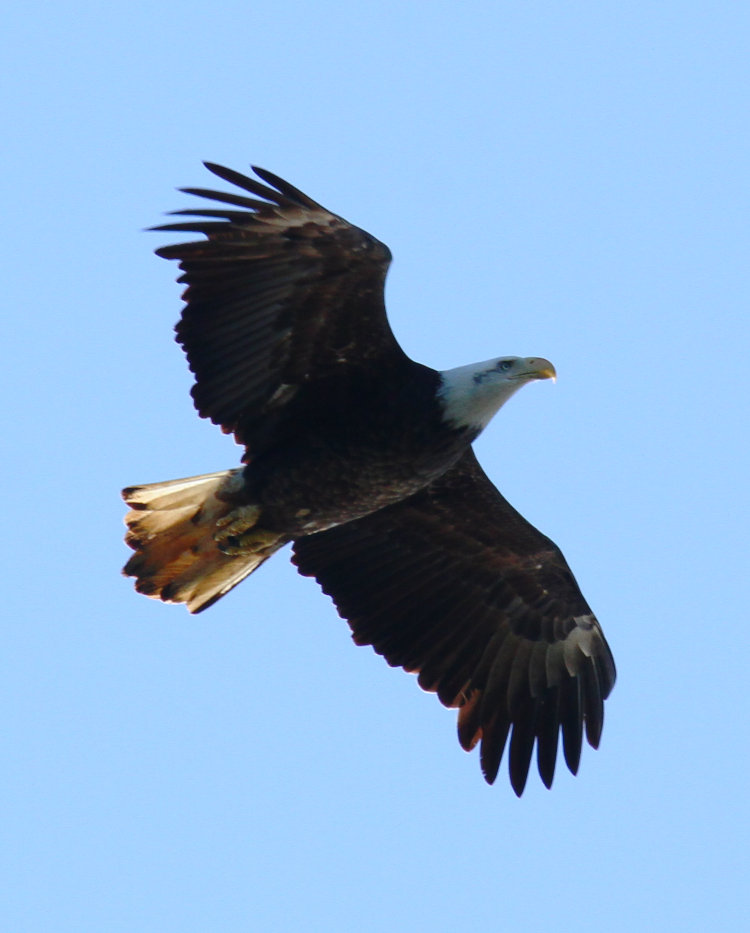
While ostensibly showing ‘adult’ coloration (meaning four years or more old,) we can see dark edges to the tail feathers as well as that dark patch behind the eye; to me, this likely indicates that this one is just transitioning into its fourth year, molting out the different plumage that they have at earlier ages. From the long sequences of frames that I gathered, this one was mostly holding the lower position in circling, and I’m thinking this might mean it was the female, being courted by the male from above. But that’s all I have to go on, and like I’ve said before, I’m a photographer, not a birdyologist.
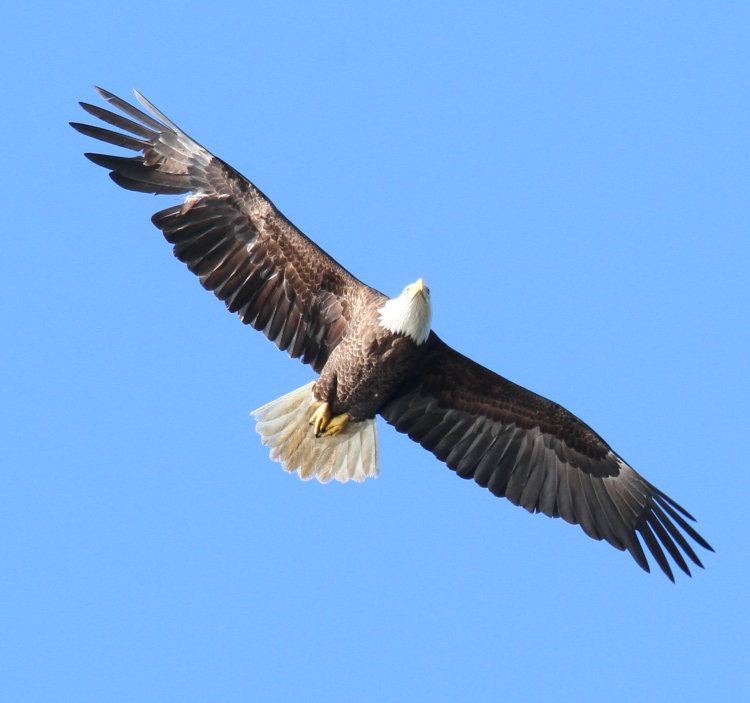
While this one shows very clean white head and tail feathers, as well as that damaged feather out near one wingtip, obviously not from molting, so easy to tell apart from others. Potentially older than the previous eagle from that coloration, but beyond year four it’s impossible to tell, and since it maintained upper postion all throughout the circling, I’m inclined to call it a male, but again, I’m inclined to do a lot of silly things.
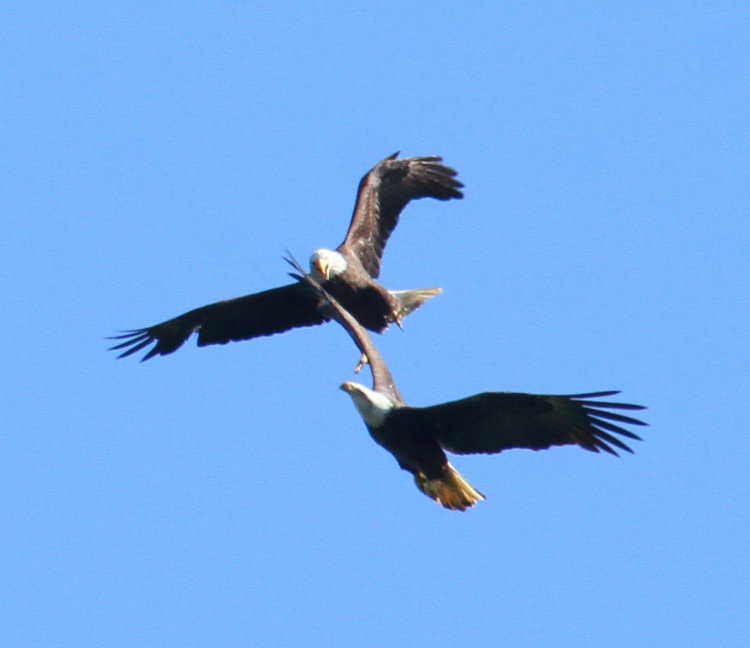
Throughout nearly all of my frames, there is no evidence of the talons dropping as they got close together, which would be an indication of territoriality; eagles are such heavy and slow flyers that they cannot simply rush one another as smaller birds might, but use their slow gains in altitude and repeated wheeling to bring themselves into a position above their opponent to pick up speed in a dive and attack, so even when being nasty to one another, often times they simply look like they’re just sharing airspace without concern. Here, however, the upper one has its talons extended, though the lower one wasn’t rolling to meet these (as they often do, even turning upside-down,) so I still don’t think this is aggression, but perhaps overtures to mating. You know, like how we rush at a potential date with our hands outstretched like claws to show interest. That’s not just me, right?
Here’s the full-frame version, and this is at 600mm, so you know they were pretty distant – I certainly couldn’t make out those talons from this.
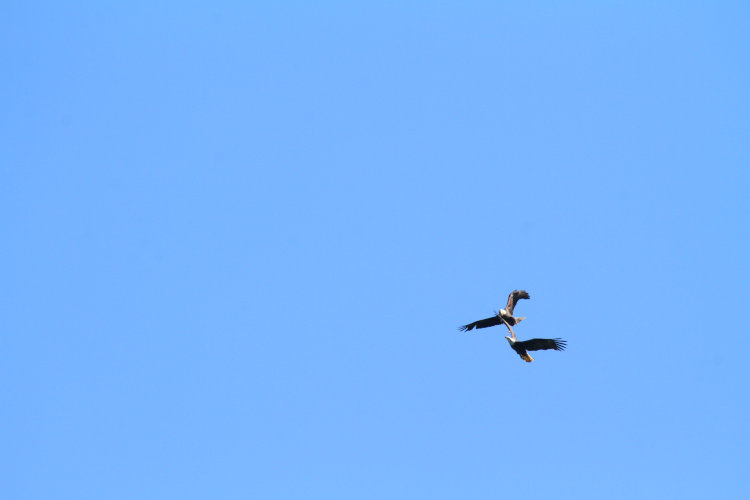
Nothing ever came of this that we saw, even when they circled overhead and shifted laterally by hundreds of meters, so if it was courtship, the male was having my luck. They drifted off and we were at the end of our session anyway, not to mention cold from the low temperature and wind of the early morning, so we packed it up. But I have a couple more images to share, from just a little earlier.
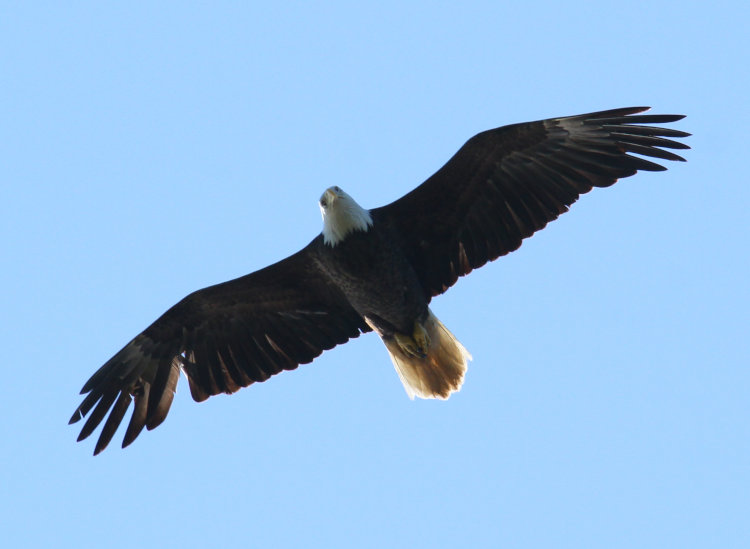
During the circling behavior, they would occasionally separate for brief periods and apparently cruise off in different directions, but never for very long, During one such period, Notchy here passed fairly low overhead, and for once, autofocus remained cooperative even as I started craning over backwards to track him. Meanwhile, he appears to be paying attention to me in return, though from the sequence of frames I didn’t hold his interest for more than a few moments. Still, we need to go in closer for those eyes.
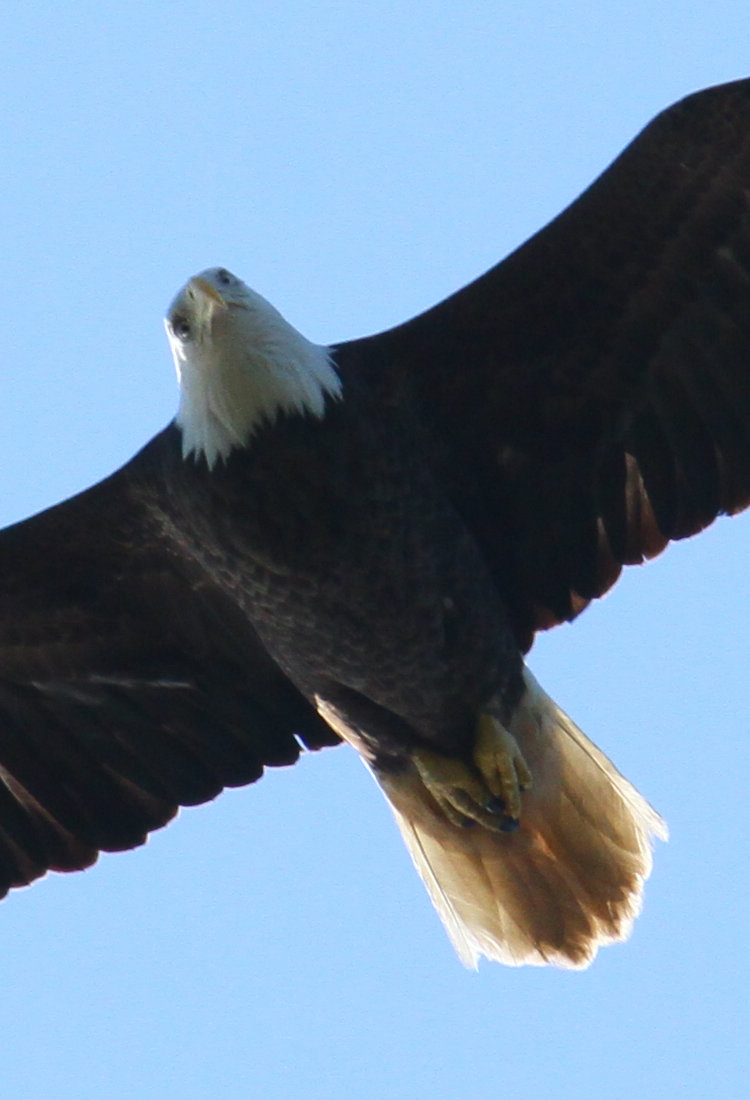
Same frame, but now at full resolution, and if I could only see the left eye, I’d say he was staring right at me, but the right eye seems to say otherwise. Is this strabismus, or can eagle eyes do that (like chameleons,) or is this simply a trick of the light? I don’t know, but it’s faintly disconcerting.
One more, because.
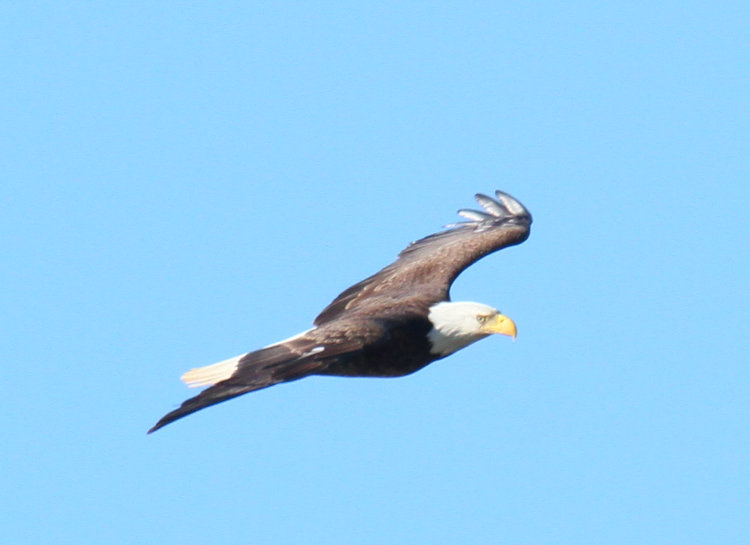
I just liked this one for the position, especially the wing over the head, and for once I captured some good light on the eyes. From examining the other frames, I can tell this was actually a different one from the pair above, much earlier. But overall, these all made the last hour far more productive than the previous two, and I fired off a lot of frames – I’ll only keep the best of course, but when they’re interacting, often times singular frames display something crucial that isn’t immediately apparent, so I always go through them carefully. We’ll see if anything else of interest pops up during the sort.
Meanwhile, more images of other subjects will be along shortly – I’ve been more productive the past two weeks that I was for the first two months of this year. No surprise, really, because winter and spring and all that, but it’s good to get back into the groove again.




















































